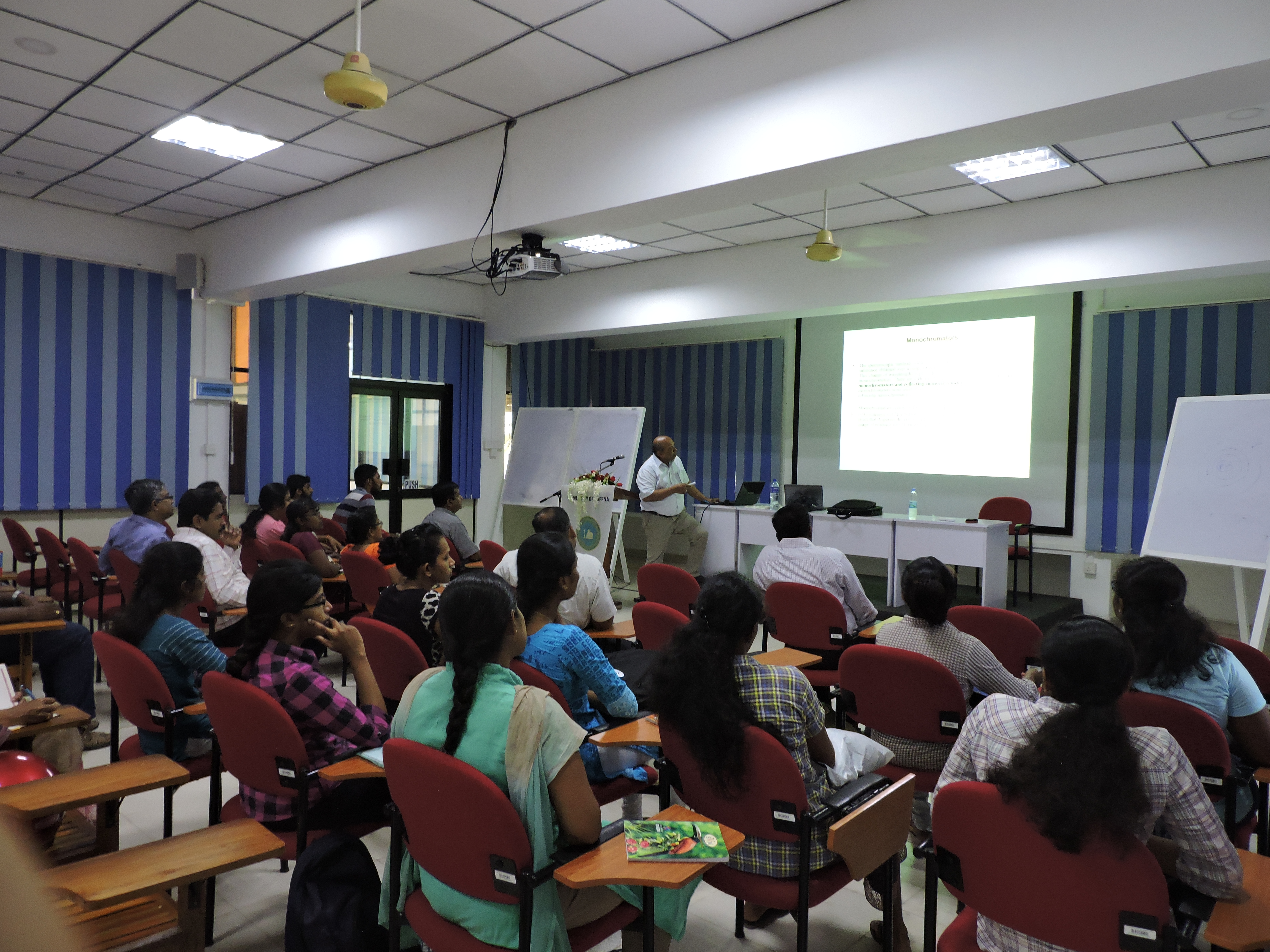Professor Alfred Christy, Professor of Chemistry, Agdar University, Norway, visited Sri Lanka on 14th March, 2018, landing at the Katunayake International Airport, Colombo, Sri Lanka at 23.45 hour. Despite his very late arrival on the 14th, he started to leave Colombo in the early morning to reach Peradeniya at around 10.30 am. He was well received by the Dean of the Faculty of Science, Director of the Postgraduate Institute of Science, Heads of Departments of Chemistry and Physics, his research collaborators Professors R.M.G. Rajapakse and G.R.A. Kumara, academic staff members of Chemistry and Physics Departments, Invited Academic Staff Representative from Newly-established UVA-Wellassa University of Sri Lanka, Postgraduate Students and Undergraduate students of the two departments. Despite the unsettled status of Kandy that was prevailed recently and that academic programmes of all Sri Lankan Universities are hampered by the Trade Union Action of the University Non-academic Staff, there were over 100 people attended the programme since academic staff members of the both departments, postgraduate and special degree undergraduate students found that the topic of his presentation is not only interesting but also highly valuable to their R&D programmes. After a brief meeting over tea at the Office of the Head, Department of Chemistry, Professor Christy gave a very valuable lecture on Application of Near Infrared Spectroscopy in Investigating Adsorbed Water in Silica, Carbohydrates and Titania, at the Chemistry Auditorium where the whole auditorium was full of participants. Professor R.M.G. Rajapakse invited him to give his presentation after reading his credentials and making the audience aware of the high calibre achievements of Professor Christy and rewards and honours awarded to him nationally and internationally. Professor Christy talked about Applications of Near Infrared Spectroscopy in identifying adsorbed, hydrogen-bonded and loose water molecules on silica nanoparticles, carbohydrates and titania nanoparticles. He presented his lecture in very clearly in easy-to-understand manner explaining all the important points very clearly for even a non-chemist to understand the concepts and arriving at conclusions through results he has obtained. He has also stressed the importance of derivative spectra such as first-derivative, second-derivative, third-derivative and fourth-derivative spectra in obtaining clear bands and resolving merged bands into their individual components. The entire audience found that the lecture was highly impressive and useful. The lecture was followed by a question time where Professor Christy was bombarded with questions. One of the most important problems in making glass superhydrophobic is to increase surface hydroxyl groups and professor Christy gave a very valuable idea to do so. Physicists who are working on ionically-conducting polymers and their applications in gel-polymer electrolyte based dye-sensitized solar cells had the problem of characterizing alumina they use in these systems. Professor Christy promised to work on alumina nanoparticles also. Professor Christy also revealed the possibility of accommodating two researchers in his research group for a short term such as three months to carry out joint research studies through the NOPRAT Programme. We are planning to send two Research Assistants to work with him in the near future.
Second Session was on Photoelectrochemical Hydrogen Generation. Two Research Students of Professor R.M.G. Rajapakse and Professor G.R.A. Kumara presented their results on Phton Upconversion Based Hydrogen Generation where Mr. R.B.D.S. Rajapakshe discussed Nb(V)-doped, Ag quantum dot attached TiO2 nanowires he synthesized in harvesting UV and Visible portions and getting near IR upconverted to visible light for faster generation of hydrogen from water. His presentation was accompanied with a video of his experiments showing fast generation of hydrogen from water in the dark. Mr. Asitha Udayana Malikaramage spent six months already at the Research Group of Professor V. Dhayalan of Western Norway University who discussed his results obtained there where he has prepared Ir-doped TiO2 nanoparticles and extensively characterized. Using methanol as the sacrificial hole scavenger he has shown a durable hydrogen degeneration system overcoming processes responsible for the slowing down of hydrogen generation reaction. He showed continuous hydrogen generation over 48 h and reusability of the catalyst over and over again. Professor Christy and the audience were highly impressed with results obtained so far and stressed the importance of continuing this research through our collaborations. Professor Christy also revealed his interest in helping the newly established Uva-Wrllassa University to improve their Technology Degree Programmes. He is of the hope that the delegates who will be visiting the International Conference on Clean Energy in May-June would be able to visit this University to give some Invited Lectures and to get them included in the programme to help develop their University also.
Professor Christy left the Department at around 3.30 pm after the generous lunch offer of Professor G.R.A. Kumara. Professor Christy’s visit was a very successful academic and social visit where he met his colleagues and teachers who were with him during his undergraduate career at this Department recalling nice memories of their time.


